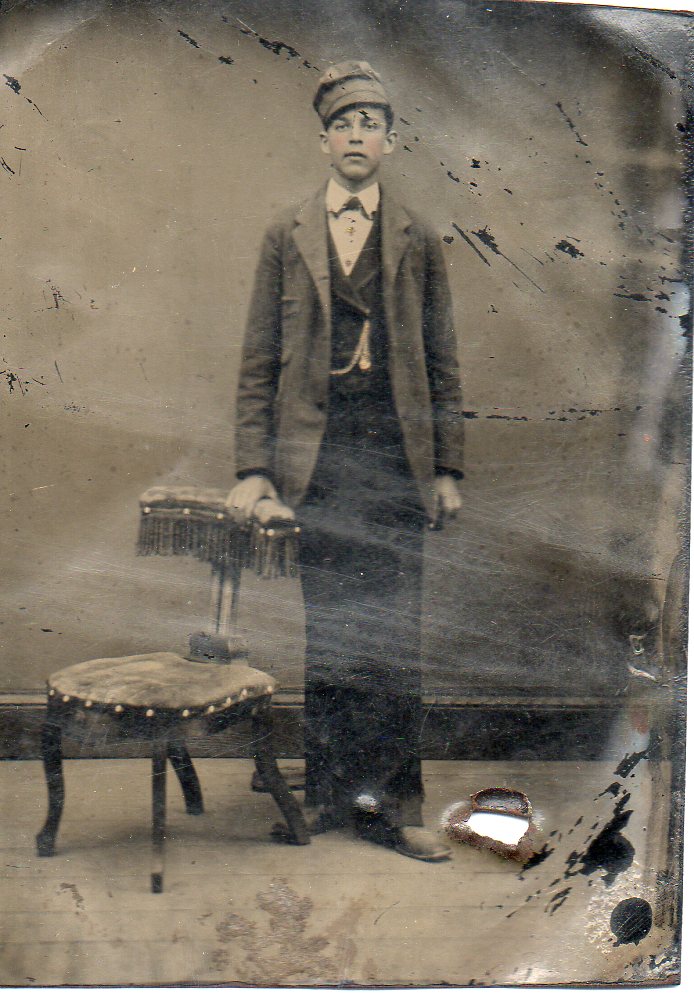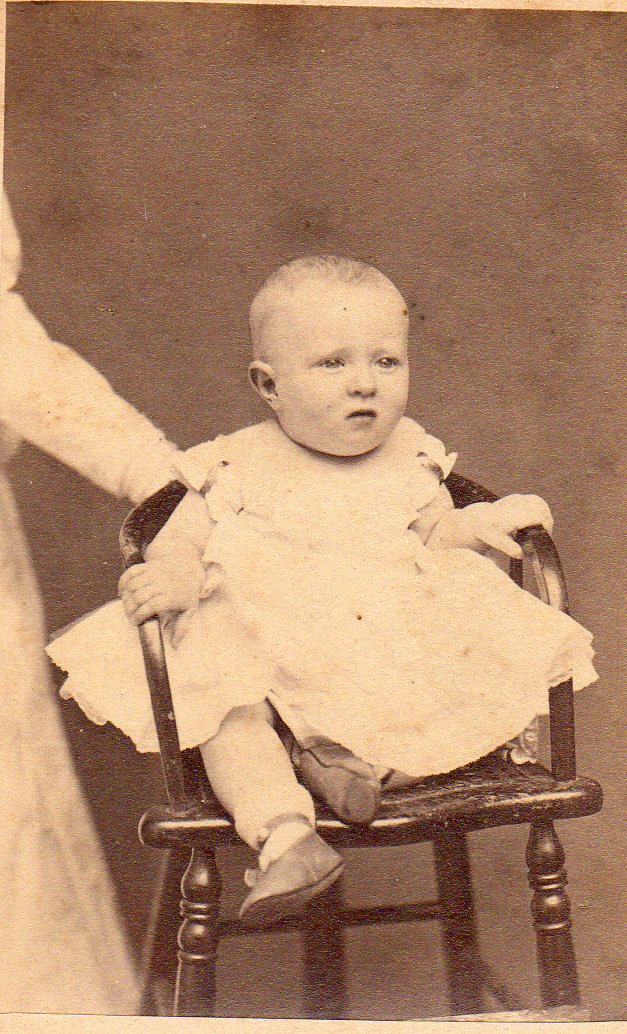Sign up for the Family Tree Newsletter Plus, you’ll receive our 10 Essential Genealogy Research Forms PDF as a special thank you!
Get Your Free Genealogy Forms
"*" indicates required fields
In the beginning, I imagine that sitters were nervous in front of the camera. It was new, and having your picture taken was an uncomfortable procedure.
Look closely at your early photographs and see if you can spot a posing device such as a wooden stand behind the subjects’ feet. This device sometimes extended as far up as the head and had clamps around a person’s waist or head to keep him still for the long exposure time. Would you feel like smiling?
In this 1870s tintype, you can see a chair with the adjustable back. This man holds the the chair back, but if you look closely at his feet, you can see a wooden brace stand.
You can learn more about photographic patents and these tools in Janice G. Schimmelman’s American Photographic Patents 1840-1880: The Daguerreotype & Wet Plate Era (Carl Mautz, $25.00). Unfortunately, I don’t own a picture of a full clamping device. Anyone got one to share?
I have a small collection of women and babies I call “hidden mothers.” Women hid under blankets and rugs to keep their babies still for the camera. In this photo, a mother or a photographer’s assistant braces the toddler for the picture.
There were also devices to hold babies that look like medieval instruments of torture.
Let’s not forget another reason individuals didn’t smile for the photographer: dental care. Forget cosmetic dentistry—few folks had a full set of pearly whites. In fact, dentistry was a new profession in the mid-19th century. The online Encyclopedia Britannica has a short article on the history of dental care.
If you have a picture of a “hidden mother,” a smiling ancestor, or a photo that includes a posing device, email it to me and I’ll post it in this space. Both of the images above are from my research picture collection.
ADVERTISEMENT






